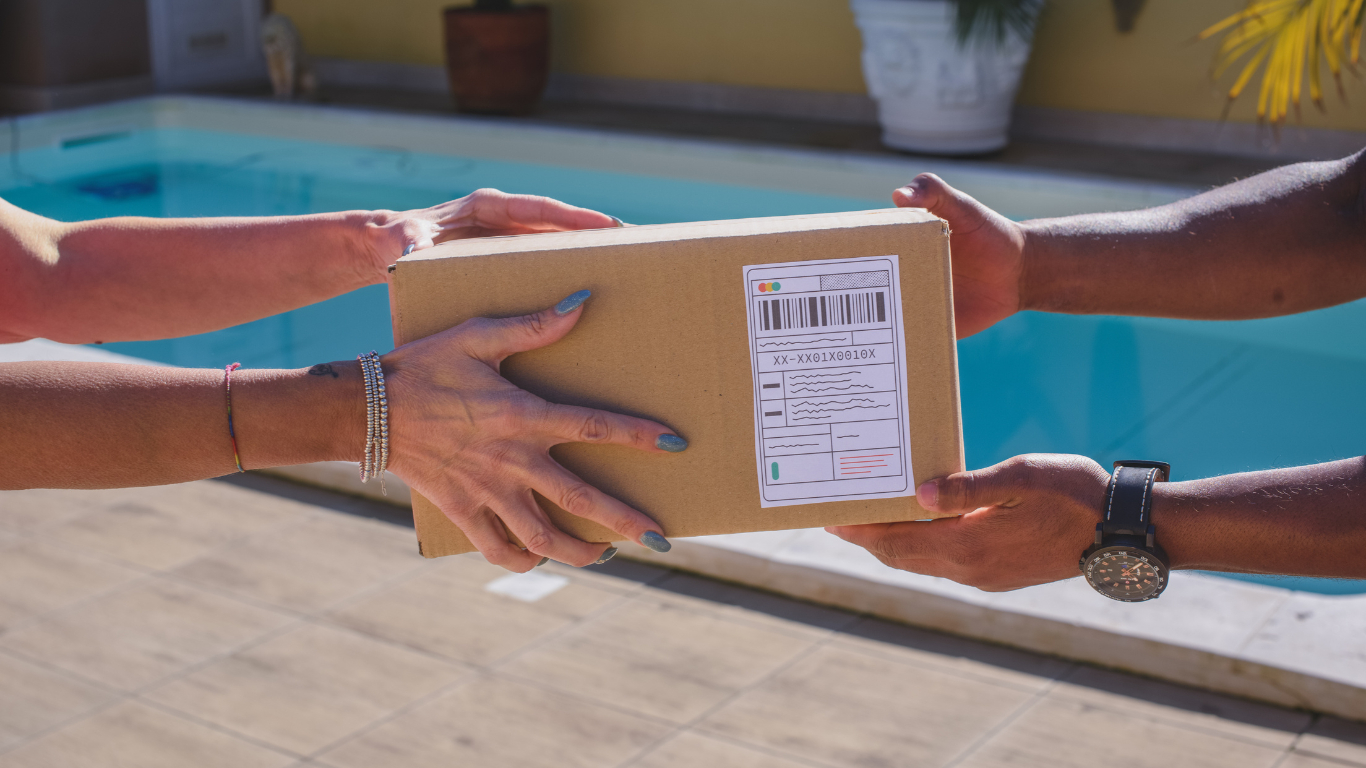Online shopping is more popular than ever, particularly during the holiday season when millions of packages are delivered. Unfortunately, scammers take advantage of this by deceiving customers through delivery scams.
These scams frequently manifest as bogus notifications, fraudulent payment requests, or deals that appear too good to be true. In 2023, payment and delivery fraud cost people over $309 million, with even more lost to credit card fraud [1].
In this article, we will explain how delivery scams work, what warning signs to look for, and how to stay safe so you can enjoy the holidays without falling victim to them.
How Delivery Scams Work
Scammers often send fake emails, text messages, or voicemails pretending to be from delivery services like USPS, FedEx, or UPS. These messages may claim there’s a package waiting for you; they include a “tracking link” or provide a missed delivery notice with a callback number.
Once you click the link, you may be redirected to a fake website that asks for personal or payment details or install malware on your device to steal information secretly [2].
How to Spot a Delivery Scam
- Unexpected Messages: Scammers send random texts, emails, or calls about fake delivery problems.
- Fake Links: The website address may look slightly wrong, like “fedx.com” instead of “fedex.com.”
- Urgent Requests: Messages that want you to act fast, like paying fees or fixing a delivery issue.
- Suspicious Details: Look for bad grammar, too many capital letters, or strange phone numbers.
- Payment Requests: Real delivery companies won’t ask for money or personal details through texts or emails.
An Example of Food Delivery Fraud
A new scam targeting food delivery drivers and restaurants was reported to the FTC, where scammers are pretending to be “support” from food delivery services like DoorDash or Uber Eats. They contact delivery drivers and restaurant owners to steal personal and financial information.
In one scenario, the scammer tells the driver or restaurant they’re sending a free tablet or printer to help manage food orders. However, they claim they need to “verify” the person’s phone number, email, login, Social Security number, and bank account details to send the equipment.
In another scenario, the scammer says they need the driver’s email or bank account information because there’s a problem with an order or they want to refund money from a canceled order. Once they get the driver’s email, the scammer might ask for an email verification code. This is a tactic used to trick the driver into sharing personal details [3].
The Rise of Delivery Scams in Singapore
According to the Singapore Police Force, delivery scams in Singapore have surged significantly, especially following major online shopping events like Singles Day, Black Friday, and Christmas sales. Since January 1, 2024, at least 631 cases of parcel delivery phishing scams have been reported, resulting in total losses exceeding $1.1 million. A staggering 505 of these cases, with losses of at least $955,000, involved scammers impersonating SingPost (Singapore Post, the national postal service of Singapore, which handles mail, parcel delivery, logistics, and digital services).
In these scams, victims receive SMS messages claiming a failed delivery. The messages prompt them to click a link to confirm their address, redirecting them to phishing sites requesting credit card details. Scammers then use these details for unauthorized purchases, leaving victims unaware until they spot unusual transactions in their bank statements [4].
 Figure 1: screenshot of a delivery scam message [4]
Figure 1: screenshot of a delivery scam message [4]
 Figure 2: screenshot of a delivery phishing website [4]
Figure 2: screenshot of a delivery phishing website [4]
How to Protect Yourself from Delivery Scams
To protect yourself from delivery scams, you need to follow a few simple steps [5]:
- Be cautious of unsolicited messages about package issues from carriers like FedEx, UPS, DHL, or others.
- Use secure payment methods (e.g., credit cards) and avoid wiring money, sending cash, or using money orders.
- Keep your delivery account and credit card details private — do not share them with unknown sources.
- Avoid using public computers for sensitive information or logging into your accounts.
- Regularly update your computer, browser, and security software to protect against potential scams.
Protect Your Business with Eydle
Delivery scams and phishing schemes often begin on social media, targeting unsuspecting customers through fake accounts or fraudulent links. Eydle helps safeguard your business by monitoring your social media profiles, detecting fake accounts, and preventing fraud before it spreads. Protect your customers and your reputation — learn more at www.eydle.com or contact us at [email protected].
Sources:
- https://www.ic3.gov/AnnualReport/Reports/2023_IC3Report.pdf
- https://www.fcc.gov/how-identify-and-avoid-package-delivery-scams
- https://consumer.ftc.gov/consumer-alerts/2023/07/scammers-impersonate-delivery-service-support-rip-drivers-and-restaurants
- https://www.police.gov.sg/media-room/news/20241122_police_advisory_on_increase_of_parcel_delivery_phishing_scams
- https://www.fedex.com/en-us/report-fraud.html




